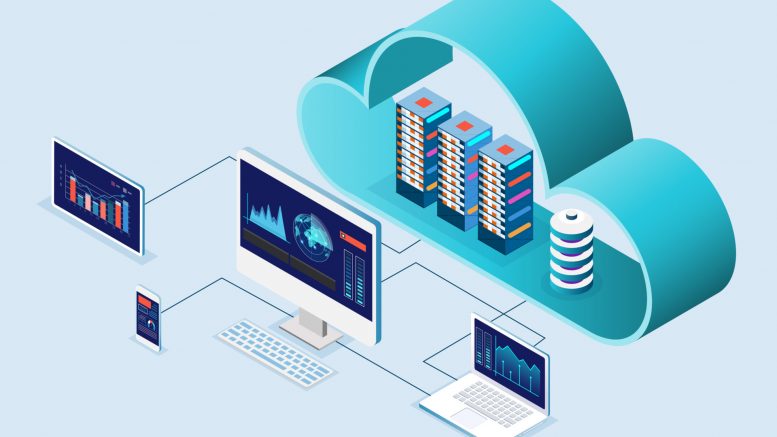Fred Walker, joint managing partner – commercial, at ICT consulting firm Atlantic Technologies, looks at how advances in cloud-based technology can address some of the challenges in creating a more patient-centred experience.
Every private healthcare setting strives to keep the patient at the centre of all its service delivery: it is a mantra that is central to public and private healthcare around the world. Yet, from a digital perspective, the desire to pull together data from different stakeholders and make it work is often hard to get right. It can lead to missing or siloed information, inadequate communication, inefficiencies and ultimately a poorer patient experience – the exact opposite of what is being aimed for!
Different stakeholders, from the patient to local authorities, national health authorities such as the NHS, and health insurance organisations, all need to share up-to-date information in a timely manner if they are to serve the needs of patients well. For a long time, this has been achieved through a convoluted mix of systems used by each party and connected through a variety of antiquated methods, such as overnight batch data transfer and updates of data files.
The problem for providers is that not only does the current approach fall short of their operational needs, but patients’ expectations for access, information and efficient communications are also higher than ever before. Today’s malaise of systems creates several challenges that leave the whole ‘system’ open to failure for a variety of reasons. For the healthcare operators, this can manifest itself in several ways, including:
- Multiple truths – If the patient is meant to be at the centre of the digital healthcare system, then there should be only one version of the truth in terms of their care records, and the information collected from other parties, that builds a single and current Unfortunately, the web of systems that many providers rely on transfers data to each other in crude and outdated ways, which means data can be quickly out of date, or even have elements missing, creating confusion.
- GRC failures – Governance, risk management and compliance are critical aspects of every healthcare system in the world. Whether it is HIPAA, the EU GDPR legislation or in-country processes and regulations related to hospital care, electronic health records or patient privacy, the necessary controls need to be in place to ensure conformance. Equally, providers need to be able to prove evidence that they are compliant. Working with multiple systems means that changes to regulations may be implemented at different times, and this can break the way systems talk to one another. Equally, when working across multiple systems where data is shared, it can be very difficult to ensure a complete audit trail exists of how information has moved around and been changed.
- Process inefficiencies – Healthcare is a process-based industry, and repeatable tasks cry out for two things. Firstly, structured processes should be defined in systems that ensure records are accurately completed, and wherever possible data automatically pulled through to complete those records – this could be a back-office task or one used by a healthcare professional, such as a doctor or nurse, when administering care. The second area is automation, where repeatable tasks could be completed automatically and more easily by a unified system. An example of this could be payroll. However, the approaches of the past make this very complex, with automation potentially broken as soon as a change takes place in one component of the system.
The cloud’s silver lining
Taking a cloud-based approach to digital healthcare allows operators to focus on the important things – delivering a patient-centred service, rather than one focused on record-keeping by individual stakeholders. It removes the barriers between systems that create data silos, connecting them in new ways that enable a real-time and complete view of every patient, with data provided by each stakeholder. Advanced healthcare cloud platforms, such as Salesforce Health Cloud, also ensures that all regulatory and compliance standards are met, with this controlled and maintained by the cloud provider, rather than draining resources and causing a huge headache for the IT, procurement, and compliance departments of the healthcare organisation. Changes to regulations are monitored by the cloud provider, implemented by their technical teams, and then made immediately available to all customers. Healthcare providers also benefit from highly skilled cybersecurity professionals delivering the kind of protections that no one provider could ever hope to resource on their own.
Mobile matters
The ways in which patients and healthcare professionals want and need to work with healthcare systems are also changing. More healthcare is delivered in the community and hospital staff of all levels need access to systems on the move – whether they are working from home, at a patient’s bedside or on the move. One of the most powerful aspects of the cloud is its ability to deliver real-time data and applications over the air to any device, from a smartphone and tablet to a PC and laptop. It can help healthcare professionals to plan their rounds and complete administrative tasks without being tied to a desk. You can even connect patients, healthcare professionals, specialists, and others on dedicated channels in real-time, with each participating from a range of locations and devices.
Operational insights
Having better data at your fingertips means you can run reports and know that they reflect the reality of what is taking place across your operations, as well as use data for historical analysis and forecasting. Crucially, you can trust the authenticity of this data and gain new insights into a range of areas, from delays to bed occupancy, and payroll to patient outcomes.
The foundation to delivering great patient management is understanding what is happening across the health estate in real-time. It is something we have seen achieved through cloud-based systems for a number of our own customers, such as private healthcare provider, Horizon Healthcare. Whether prioritizing patient needs, managing patient populations and caregiver networks, or hunting opportunities to improve efficiencies and reduce costs – data is the key to insight and better decision making.
The patient-centred cloud
Patient-centred healthcare is not just a buzz word, today it is a reality, with regulators and patients having high expectations. Putting the cloud at the core of your IT operations helps break down the barriers, delivering improved operations, communications, and services to those that need them most. In the same way that healthcare and medicine have advanced over the last 25 years to the benefit of patients, the cloud has become the only way to deliver a truly patient-centred healthcare operation.





